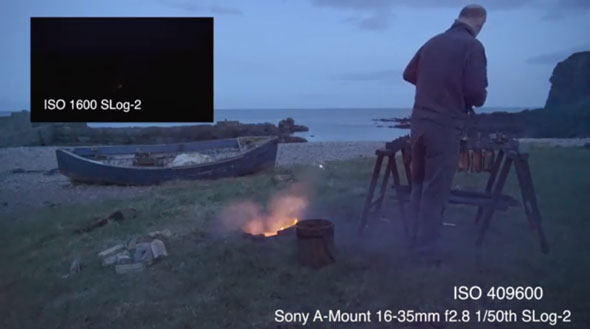Sony’s new high ISO king A7S — and the Nikon D4s for that — bring us the most revolutionary innovation in photography for some time: ISO sensitivity in the hundreds of thousands. An expandable, mind-boggling ISO 409,600 to be exact, meaning up to ISO 25,600 these cameras will churn out absolutely noise-free, clean images. Plain insane.

See what can’t be seen… This new A7 sibling doesn’t make life easier for current A7(R) owners, guess many tinker with the idea of trading it in. The A7 lineup must be a winner. Sony wouldn’t offer three of its kind otherwise.
These new, next-generation cameras are able to see in the dark, surpassing the human eye’s sensitivity by far. ISO 102,400 look like ISO 3,200 of only recently released APS-C cameras.
And you know what, the 12.2MP resolution is good enough for me — to speak with Ken Rockwell’s meanwhile famous Megapixel Myth:
The megapixel myth was started by camera makers and swallowed hook, line and sinker by camera measurebators. Camera makers use the number of megapixels a camera has to hoodwink you into thinking it has something to do with camera quality. They use it because even a tiny linear resolution increase results in a huge total pixel increase, since the total pixel count varies as the total area of the image, which varies as the square of the linear resolution. In other words, an almost invisible 40% increase in the number of pixels in any one direction results in a doubling of the total number of pixels in the image. Therefore camera makers can always brag about how much better this week’s camera is, with even negligible improvements.
This gimmick is used by salespeople and manufacturers to you feel as if your current camera is inadequate and needs to be replaced even if the new cameras each year are only slightly better.
One needs at least a doubling of linear resolution or film size to make an obvious improvement. This is the same as quadrupling the megapixels. A simple doubling of megapixels, even if all else remained the same, is very subtle. The factors that matter, like color and sharpening algorithms, are far more significant.
The megapixel myth is also prevalent because men always want a single number by which something’s goodness can be judged.
Unfortunately, it’s all a myth because the number of megapixels (MP) a camera has has very little to do with how the image looks. Even worse, plenty of lower MP cameras can make better images than poorer cameras with more MP.
12MP are good enough for most jobs, even for glossy magazine spreads, not to mention most photojournalism, street photography and even studio tasks. And who doesn’t love smaller files and needs image stabilization anymore…
But see for yourself what seeing in the dark means — here’s an official Sony video which shows how the A7S performs in low light from ISO 1,600 to the maximum. Pretty impressive, to say the least:
The Sony A7S’ price is not yet know, but be notified when it’s in stock…


